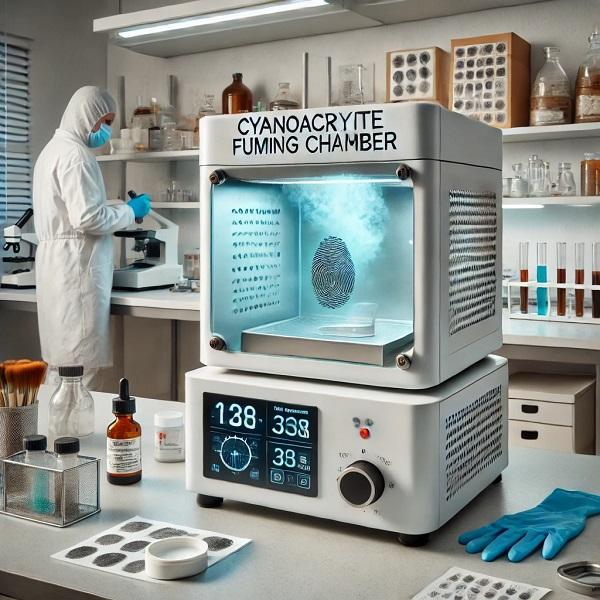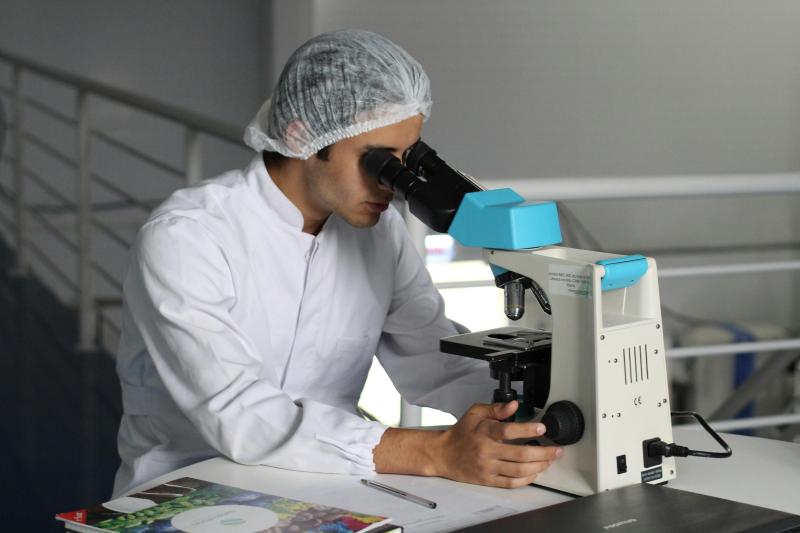Enhancing Latent Fingerprint Development: The Use of Cyanoacrylate Fuming Chambers

Introduction
Latent fingerprints are crucial evidence in forensic investigations, often serving as the key to solving crimes. However, these prints are often invisible to the naked eye and require specialized techniques to be developed and visualized. One of the most effective methods used by forensic experts is the cyanoacrylate fuming process, also known as superglue fuming. This article explores how cyanoacrylate fuming chambers enhance latent fingerprint development, their working principles, and the benefits they bring to forensic science.
What is Cyanoacrylate Fuming?
Cyanoacrylate fuming is a chemical process that uses the vapors of cyanoacrylate ester (commonly found in superglue) to develop latent fingerprints on non-porous surfaces such as glass, plastic, and metal. When the cyanoacrylate vapor comes into contact with the fingerprint residues, which are typically composed of moisture, oils, and other contaminants, it polymerizes and forms a hard, white, visible coating over the print, making it easier to analyze and capture.
The Cyanoacrylate Fuming Process
- Preparation: The item containing potential fingerprints is placed in a sealed fuming chamber. Cyanoacrylate liquid is then added to a small dish or pad within the chamber.
- Heating and Humidifying: The chamber is heated to a specific temperature to create cyanoacrylate vapors. Additionally, humidity levels are maintained to enhance the reaction process. A small dish of water is often placed in the chamber to provide the necessary moisture.
- Fuming: As the cyanoacrylate vapor fills the chamber, it adheres to the fingerprint residues. The exposure time can vary but typically lasts from 10 to 20 minutes.
- Development: After fuming, the object is removed from the chamber, and the developed fingerprints appear as white, three-dimensional patterns that can be further enhanced using powders, dyes, or photography.
- Documentation and Analysis: The developed fingerprints are photographed and analyzed using specialized software and techniques to match them against existing records in fingerprint databases.
Types of Cyanoacrylate Fuming Chambers
- Portable Fuming Chambers: These are small, mobile units ideal for use in the field. They are typically used for processing small items or for on-site crime scene investigations.
- Benchtop Fuming Chambers: These are medium-sized units commonly used in forensic laboratories. They offer better control over environmental factors such as temperature and humidity, ensuring consistent fingerprint development.
- Walk-in Fuming Chambers: Large, room-sized chambers designed for processing bigger items or multiple items simultaneously. These are mostly found in advanced forensic laboratories.
Advantages of Cyanoacrylate Fuming Chambers
- Non-Destructive: The process is non-destructive, allowing forensic experts to retain the original integrity of the evidence.
- Effective on Non-Porous Surfaces: Cyanoacrylate fuming is particularly effective on non-porous surfaces, which are common at crime scenes.
- Long-Lasting Prints: The prints developed through cyanoacrylate fuming are durable and resistant to physical damage, making them ideal for long-term analysis.
- Versatility: Cyanoacrylate fuming can be used on a wide variety of materials, including metals, glass, plastics, and even some types of wood and fabric.
- Enhanced Visualization: The developed fingerprints can be further enhanced using fluorescent dyes or powders, improving the quality and clarity of the prints for analysis.
Challenges and Considerations
- Proper Ventilation: The cyanoacrylate vapors can be harmful if inhaled in large quantities, so proper ventilation or a fume hood is necessary when using fuming chambers.
- Controlled Environment: Consistent temperature and humidity control are essential for the process to work effectively. Fluctuations can lead to incomplete or poor-quality fingerprint development.
- Training: Proper training is required for forensic experts to handle cyanoacrylate fuming equipment and procedures safely and effectively.
- Post-Processing: Additional enhancement techniques may be required to make the fingerprints suitable for analysis, which can be time-consuming.
Conclusion
Cyanoacrylate fuming chamber are indispensable tools in modern forensic science, providing a reliable method for developing latent fingerprints. Their effectiveness on non-porous surfaces, coupled with the non-destructive nature of the process, makes them a preferred choice for investigators. By optimizing fingerprint development and preservation, cyanoacrylate fuming enhances the ability of forensic experts to solve crimes and deliver justice. As technology advances, these chambers will continue to evolve, offering even greater precision and efficiency in the field of forensic fingerprint analysis.












Comments